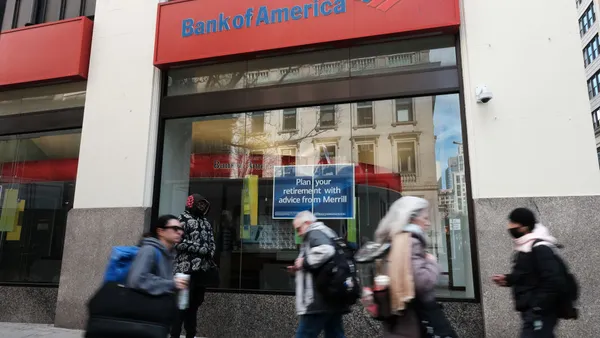Dive Brief:
- The Federal Deposit Insurance Corp. on Thursday said its Deposit Insurance Fund reserve ratio is tracking toward the statutory minimum of 1.35% earlier than the required deadline. The reserve ratio refers to the proportion of the DIF balance relative to FDIC-insured deposits.
- The agency, which issued a semiannual update on the DIF’s restoration plan, said the reserve ratio has risen by 6 basis points since the last update, from 1.15% as of Dec. 31, 2023, to 1.21% as of June 30. The FDIC attributed that to DIF balance growth and slow insured deposit growth.
- The DIF totaled $129.2 billion at the end of June, up $7.5 billion since the end of last year, according to an FDIC memo.
Dive Insight:
The deadline to reach the minimum requirement is Sept. 30, 2028. But hitting the target ahead of schedule “strengthens the DIF so that it can better withstand unexpected losses and reduces the likelihood of pro-cyclical assessment increases,” FDIC Chair Martin Gruenberg said in a statement.
FDIC staff project the reserve ratio will reach 1.35% in 2026, according to the memo. That estimate is “subject to uncertainty,” of course, and “it is possible that the reserve ratio could remain below 1.35 percent beyond 2026 if losses for past and future bank failures increase beyond staff estimates, or insured deposit growth significantly exceeds staff estimates,” staff said in the update.
The FDIC board is required to adopt a restoration plan in the event that the DIF reserve ratio falls below 1.35%, or is expected to within six months. As the COVID-19 pandemic upended the economy in the first half of 2020, “extraordinary growth” in insured deposits led the reserve ratio to fall below that statutory minimum.
The FDIC’s board adopted a plan to address that within eight years, and keep existing assessment rate schedules, according to the memo. But in June 2022, the board implemented an increase, upping initial base deposit insurance assessment rates by 2 basis points, in light of projections the reserve ratio might not be restored by the deadline, if different scenarios were to occur. Those amended assessment rate schedules took effect Jan. 1, 2023.
Then came 2023’s five bank failures, which resulted in estimated losses to the DIF of $19.7 billion, not counting losses recovered through the FDIC’s special assessment. This year’s single bank failure – that of Philadelphia lender Republic First – has come at an estimated cost to the DIF of $667 million.
Had the FDIC not implemented the rate increase prior to the failures of First Republic, Signature and Silicon Valley Bank last year, the board may have had to weigh a bigger increase to get the reserve ratio back to where it needed to be with less time before the deadline, Gruenberg said Thursday.
The FDIC’s “problem bank” list totaled 66 financial institutions by the end of the second quarter, higher than the tally of 52 at the end of the fourth quarter of 2023. Despite that rise, “problem banks represented 1.5 percent of all banks, which is in the normal range of 1 to 2 percent of all banks during non-crisis periods,” the FDIC memo noted.














